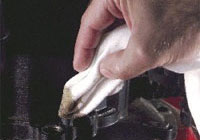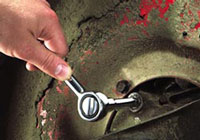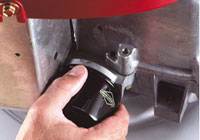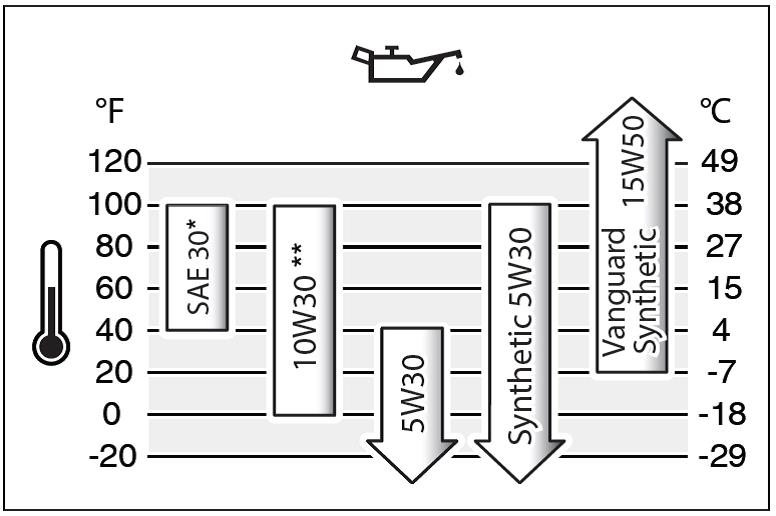How to Change Small Engine Oil
Steps to Better Engine Maintenance
For optimum performance, you should change the oil in your small engine after the first five hours of use and then annually, or every 50 hours of use (whichever comes first).
- Use Briggs & Stratton SAE 30W Oil above 40°F (4°C) for all of our engines.
- Check oil level regularly.
- Air-cooled engines burn about an ounce of oil per cylinder, per hour.
- Fill to mark on dipstick. DO NOT OVERFILL.
Step 1: Getting Started

Start the engine and run it until it is warm. Stop the engine. WARNING: Be sure to disconnect the spark plug wire, and secure it away from the spark plug to prevent accidental starting. Clean around the oil fill and drain plug area to prevent dirt and debris from falling into the crankcase (see photo at right). Remove the dipstick, if equipped.
Step 2: Draining The Oil

Tilt the mower deck with the air filter or spark plug side up, and position some newspaper and an oil pan or jug beneath the mower. Use a 3/8" drive socket wrench and extension (no socket) to turn the plug counter clockwise (see photo at right), allowing the old oil to drain. If the plug also serves as a fill cap (normally yellow or white in color), it may have two prongs so you can loosen it by hand or with a screwdriver or hex key for additional torque.
Replace the drain plug by twisting clockwise and tightening with a box wrench or adjustable wrench. If your engine does not have an oil filter, skip this step.
Step 3: Engines with Oil Filters

If your engine has an oil filter, replace it at least once per season.
- Replace the oil filter by twisting counterclockwise on the body, using a filter wrench or pipe wrench.
- Examine the sealing surface on the oil filter adapter for debris or gasket material. Clean if necessary.
- Lightly oil the filter gasket with clean engine oil. Install a new filter, screwing in by hand until the gasket contacts the filter adapter (see photo at right). Tighten the filter an additional 1/2 to 3/4 turn.
Step 4: Fill With New Oil
Pour in the correct amount and approved type of oil for your engine, based on this oil capacity chart , or your operator manual. If you have two oil fill plugs (normally yellow or white in color) on each side of the engine, either one can be used to fill the engine with oil to the correct level. Please DO NOT fill the engine with oil without using the correct measuring device as illustrated in your operator’s manual.
Oil Recommendations

We recommend the use of Briggs & Stratton Warranty Certified oils for best performance. Other high-quality detergent oils are acceptable if classified for service SF, SG, SH, SJ or higher. Do not use special additives.
Outdoor temperatures determine the proper oil viscosity for the engine. Use the chart to select the best viscosity for the outdoor temperature range expected. Engines on most outdoor power equipment operate well with 5W30 Synthetic oil. For equipment operated in hot temperatures, Vanguard 15W50 Synthetic oil provides the best protection.
* Below 40°F (4°C) the use of SAE 30 will result in hard starting.
** Above 80°F (27°C) the use of 10W30 may cause increased oil consumption. Check oil level more frequently.
TROUBLESHOOTING FAQS
View solutions for handling the most common engine and product troubleshooting and maintenance questions.
VIDEOS
Learn about the latest products by Briggs & Stratton, step-by-step instructions on how to locate your lawn mower engine model number and more!


.jpg)
